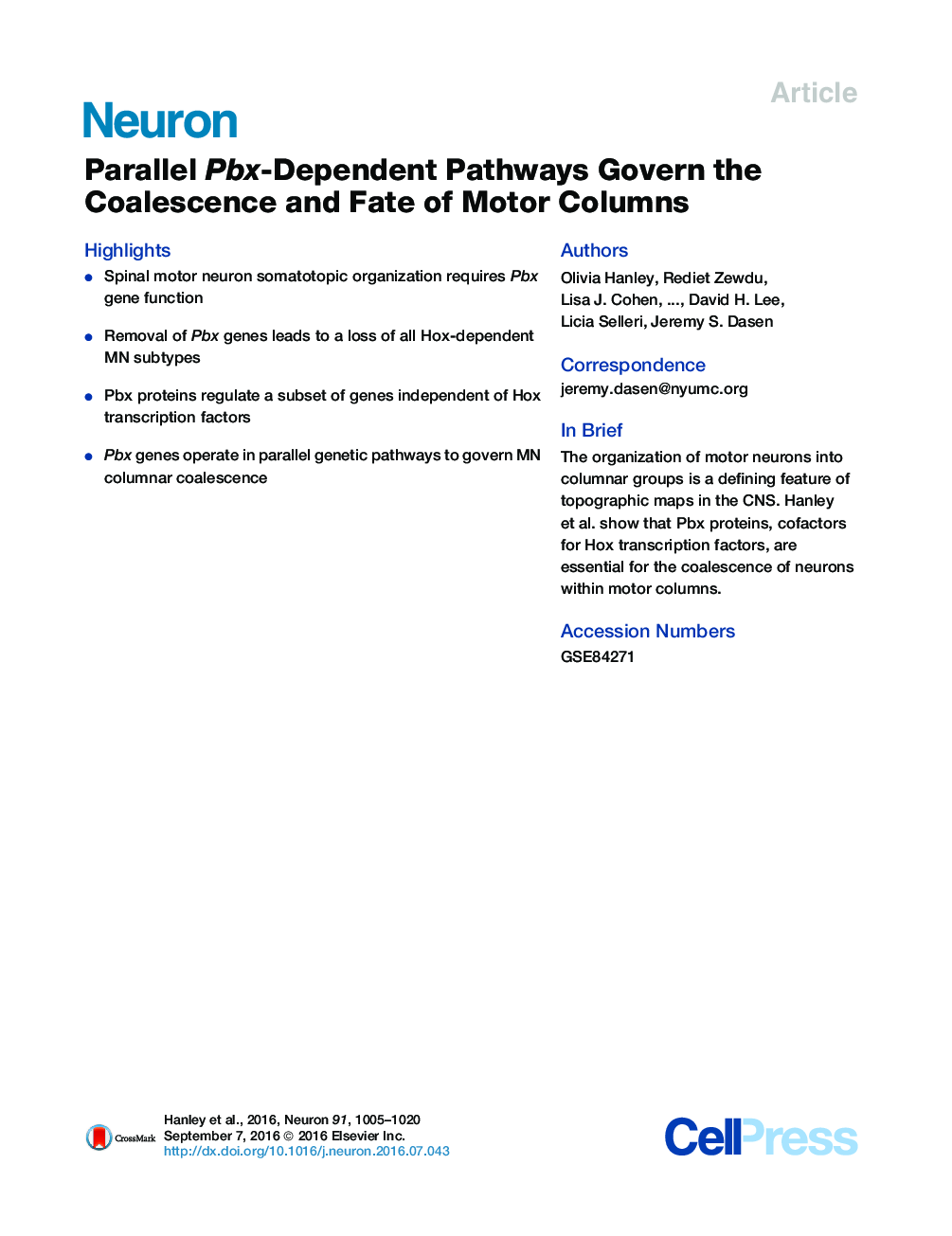| Article ID | Journal | Published Year | Pages | File Type |
|---|---|---|---|---|
| 4320607 | Neuron | 2016 | 16 Pages |
•Spinal motor neuron somatotopic organization requires Pbx gene function•Removal of Pbx genes leads to a loss of all Hox-dependent MN subtypes•Pbx proteins regulate a subset of genes independent of Hox transcription factors•Pbx genes operate in parallel genetic pathways to govern MN columnar coalescence
SummaryThe clustering of neurons sharing similar functional properties and connectivity is a common organizational feature of vertebrate nervous systems. Within motor networks, spinal motor neurons (MNs) segregate into longitudinally arrayed subtypes, establishing a central somatotopic map of peripheral target innervation. MN organization and connectivity relies on Hox transcription factors expressed along the rostrocaudal axis; however, the developmental mechanisms governing the orderly arrangement of MNs are largely unknown. We show that Pbx genes, which encode Hox cofactors, are essential for the segregation and clustering of neurons within motor columns. In the absence of Pbx1 and Pbx3 function, Hox-dependent programs are lost and the remaining MN subtypes are unclustered and disordered. Identification of Pbx gene targets revealed an unexpected and apparently Hox-independent role in defining molecular features of dorsally projecting medial motor column (MMC) neurons. These results indicate Pbx genes act in parallel genetic pathways to orchestrate neuronal subtype differentiation, connectivity, and organization.
